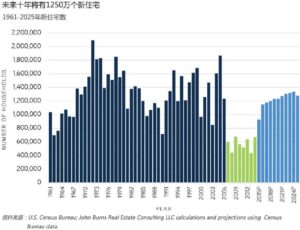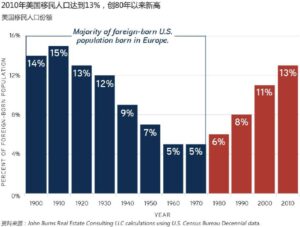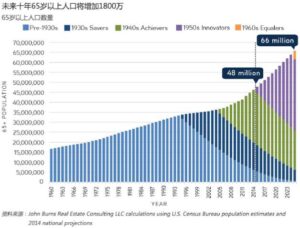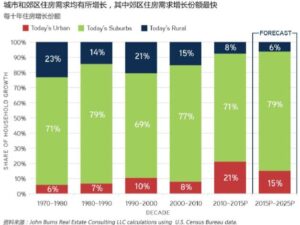(PCC) Program on Chinese Cities – Thoughts on Overseas Travels Series
Authors: Weiping Xiao,
PhD Candidate in Economics and Management at Wuhan University, Joint PhD Program with UNC, specializing in urbanization of the population. xapple915@gmail.com
Influenced by various movies and TV shows, before arriving in the United States, I imagined it as dynamic, fashionable, and filled with skyscrapers. However, my actual experience on this land was vastly different from my imagination. Apart from older, larger cities like New York and Chicago, which are crowded, densely populated, and filled with high-rises similar to Chinese cities, other cities are mostly spread over a large area with relatively small downtown areas featuring a few tall buildings for government offices, corporate offices, and shopping centers. Residential areas are sparsely distributed around vast green spaces, mostly consisting of single-story houses or two to three-story detached villas.

In China, due to significant urban-rural differences, cities have clear advantages in infrastructure, public education, and social welfare, leading people with financial means to settle in cities. In contrast, in the United States, the situation is reversed: the poor are concentrated in city centers, while the wealthy are spread out in the suburbs. This is because cities have high population densities, limited living space, and congested traffic, while suburbs offer education and amenities comparable to cities, but with better living environments. In the U.S., owning land and a detached house with a yard, lawn, trees, and winding paths is a symbol of middle-class success, as well as a stepping stone to greater wealth and higher social status.
The development of modern American suburbs began after 1920, spurred by the widespread use of private cars, the gradual formation of the highway network, a shift in the economic structure towards a post-industrial economy, guidance from federal and state policies, and resistance to the consolidation of suburbs into central cities. The Great Depression and World War II briefly halted urbanization and suburbanization in the U.S. After WWII, the U.S. economy entered an unprecedented boom, and the pent-up demand for housing from the Depression and the war era exploded – veterans wanted to settle down, young people wanted to start families, and existing families wanted to move into new homes – leading to a construction boom in the suburbs, the likes of which had never been seen before in America. By 1950, for the first time, more Americans lived in suburbs than in cities and rural areas combined. Simultaneously, industries and businesses also began moving from city centers to suburbs, marking the gradual transformation of the U.S. into a suburban nation.
However, the massive movement towards suburbanization has also attracted criticism: low-density land use in suburbs is seen as a waste of land resources; the dispersed and unplanned development of suburbs heavily relies on private cars, wasting oil resources; suburban life is criticized for its homogeneity, lack of diversity and vibrancy, cold interpersonal relationships, and absence of community culture; wealth and class segregation is becoming more pronounced; and city centers are declining. Since the 1980s, the term “suburb” in the U.S. has become synonymous with low-density urban sprawl and the antithesis of sustainable urban development.
Yet, in recent years, significant changes in population and social structure due to the growth of the young workforce, changes in immigration patterns, the rise of professional women, and the retirement of the baby boomer generation have introduced new characteristics of density, diversity, and prosperity to suburban development.
1. Suburbs Becoming More Like Cities
John Burns, CEO of John Burns Real Estate Consulting, believes that “modern society values time savings over living in large houses. Long commutes have always been undesirable and outdated.”
As urban land becomes more expensive and its lifestyle more popular, many suburban developers are trying to create communities that are convenient, densely populated, and cater to consumers who enjoy urban life but want to reduce living costs. These new communities, built near dining, entertainment, and workplaces, offer smaller, more affordable housing options. For example, Plano, Texas, has established a downtown area in the suburbs, maintaining suburban living while keeping land prices affordable. The city successfully persuaded Toyota’s North American headquarters to relocate there, with convenient transportation and reasonable land prices being key factors.
2. A Shift in Commercial and Retail Development, Rise of Flexible Suburban Office Spaces
The president of the National Association of Home Builders, Bowman, notes that traditional office parks and big box stores are decreasing, replaced by the rise of office space in the suburbs, located near commercial areas, and offering more flexible options for the service industry. Suburban office spaces in the U.S. are not a new concept but are expected to revive and become a core part of suburban development, described by Bowman as “crossroads businesses” – smaller, more personal, and flexible, aligning with modern values. The growth of professional women, with 58% of college degrees expected to be awarded to women, playing an increasingly important role in corporate leadership, including office location choices, is a significant factor driving this change.
3. Population Structure Changes Reshaping Suburbs
In the next decade, U.S. immigration is expected to continue growing, with immigrants having higher incomes and education levels, and choosing to live in the suburbs. Unlike in the past, where many immigrants entered illegally and worked in low-income, manual jobs, future immigrants are likely to enter through legal channels, contributing to a more diverse suburban culture and significantly impacting the business landscape. By 2025, one in seven U.S. residents will be an immigrant, reaching a total of 53 million and adding diversity to suburban culture.

4. Millennials and Empty-Nesters Reshaping the Housing Market
The sharp increase in housing demand from young people will fundamentally change land use policies. A report by Demographic Strategies for Real Estate in 2016 indicated that homeownership in the U.S. from 2015 to 2025 would increase by 86%, requiring the construction of 13.7 million new homes to meet market demand. The retirement of the baby boomer generation will also significantly impact the housing market, with the population of those over 65 expected to grow by 38%, or 18 million, prompting a new wave of moving and renting in the suburbs.
In summary, American suburban development is showing trends of increasing population density and residential space, with the rise of suburban office spaces injecting new vitality into suburban development, leading to continuous prosperity. American suburbs are moving closer to urban characteristics but are not completely urbanized. Finally, quoting Kenneth Jackson, a historian of American cities and a professor at Columbia University, “Everything is changing. As suburbanization slows, a new spatial equilibrium is being reached between cities and suburbs.”



